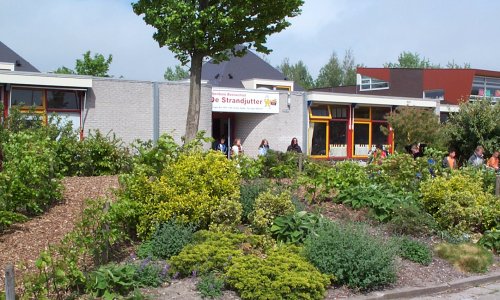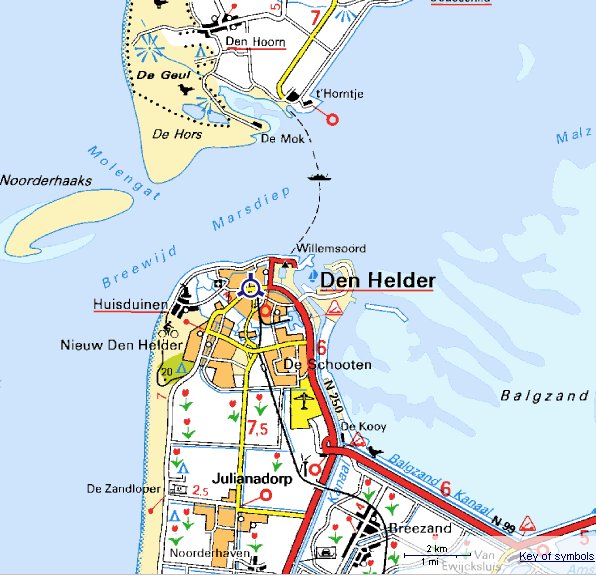
Netherlands
Den Helder
Public School "De Strandjutter"

Our school is situated in the south of the newest part of Den Helder. In fact this part is called "Julianadorp" or the village of Juliana, the Queen's mother, because this district was build near that village.
The schools is a
"K-6" school. Kindergarten and primary school are combined. At the age
of four, the children start visiting the school in group 1. Group 1 is often
combined with group 2, so the former Kindergarten is a combination of young and
older children. The total number of pupils is about 180. Depending on the number
of pupils in a group, which can vary, some of our groups are in combined
classes. So "class" refers to the classroom and "group"
depends on the year of education.
All teachers teach all subjects. In grade 5 and 6 the pupils learn English. We
work according to the "GIP" model, which improves independent
learning.
Our team consists of 13 teachers and an administrator. Some collegues work part-time. Some have combined tasks like Remedial Teaching and a class. On the photograph below (shot in May 2006), you can see most of the collegues.

You can find pictures about school life at: www.obaodenhelder.nl/strandj/ and the panorama enhances your view on the building and surroundings.
We took part in the Comenius project
"Virtual Museum of Flowers and Plants" with Spain, Finland and
Lithuania.
We also took part in the big CHIMER project, with: the university of Vilnius (Lithuania),
the Fraunhofer institute in Rostock (Germany), Nokia and the university of Turku
(Finland). Schools in these countries, like our school, were involved in
making content for a system in which the GPS position of a location could be
coupled to the information in a database. The information could be retrieved by
means of mobile phones of the third generation. The pupils learned making
video clips (instructed by a director) and using high tech devices.
Den Helder has about 60.000 inhabitants and is surrounded by the sea at three sides. The Royal Navy is the main economical driving force in our town. Den Helder has beautiful broad beaches and is gate to the island of Texel, north of the town. South of the city is an agricultural area, mostly bulb fields, as you can see on the Via Michelin map:
 In
Den Helder is some light industry. There are also supplying companies for the
oil rigs in the North Sea.
In
Den Helder is some light industry. There are also supplying companies for the
oil rigs in the North Sea.
The airport is the Royal Navy's only existing airport and it is also an active place for the helicopters transporting the workers on the oil rigs.
Den Helder wants to attract more tourism. The old Navy dockyard "Willemsoord" is one of those ventures.
Den Helder has a particular
past. As it has been (and still is) dependant on the sea, the town has known
many ups and downs.
Hundred of years ago the people were poor, because the land produced little and
life at sea (fishing, tugging, piloting) was hard. Later, the navy shrinked and
expanded. A new canal from Amsterdam to Den Helder brought prosperity for a
short time in the 1800's. This ended very soon when Amsterdam build a
shorter canal to the North Sea.
Napoleon visited Den Helder around 1800 and decided to build fortresses around the city he called the "Giraltar of the north". The Nazi's had the same thoughts in 1940 - 1945 and build their concrete extentions of the "Atlantik Wall", so the place is still littered with pillboxes and other fortifications.
After World War II the city severly damaged and the original town was vanish by the nazi's. Soon after the war the Navy was concentrated in Den Helder and the town expanded in a way never seen before.
The following Dutch links present information about Den Helder:
Contact information about De Strandjutter:
Drooghe Bol 1005
1788 VA Den Helder
Netherlands
Tel. +31 0223-690079
Fax: +31 0223-692205
E-mail:
directie@obsstrandjutter.nl